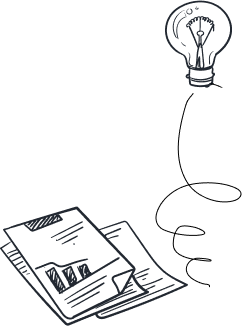For many who struggle with addiction, the battle feels like a grim cycle of relapse and regret. They treat the substance use, only to find themselves pulled back in by an invisible, powerful undertow. That undertow is often an untreated, co-occurring mental health disorder. The reality is that addiction rarely travels alone. It is often one half of a "dual diagnosis," a complex and deeply intertwined relationship with conditions like depression, anxiety, or trauma. This article untangles that knot, explaining why treating one without the other is like trying to patch a leak in a boat while ignoring a gaping hole right next to i
Key Points
- Co,occurring disorders, also known as a "dual diagnosis," are when a person experiences both a substance use disorder and a mental health disorder simultaneously. This is the norm in addiction, not the exception (1).
- The relationship between addiction and mental health is a "two,way street": mental health conditions can lead to self,medication with substances, and chronic substance use can cause or worsen mental health disorders (2).
- Treating only one condition while ignoring the other is a primary cause of treatment failure and relapse. The unaddressed issue consistently undermines progress made on the other (3).
- An "integrated treatment" model, where a single team or collaborating teams treat both disorders at the same time in a coordinated way, is the gold standard for care and offers the best chance for lasting recovery (4).
- Successful recovery from a dual diagnosis requires a holistic plan that may include individualized therapy (like CBT or DBT), non,addictive medication management for the mental health condition, and robust, dual,diagnosis,informed support systems (5).
Introduction: The Chicken and the Egg Dilemma
For many who struggle with addiction, the battle feels like a grim, repeating cycle of relapse and regret. They commit to sobriety, attend meetings, and do the work, only to find themselves pulled back into the grip of substance use by an invisible, powerful undertow. That undertow is very often an untreated, co,occurring mental health disorder. The reality, supported by decades of research, is that addiction rarely travels alone. It is frequently one half of a "dual diagnosis," a clinical term for a complex and deeply intertwined relationship with conditions like depression, anxiety, trauma, or bipolar disorder.
For the person caught in this cycle, it can feel like an impossible "chicken and the egg" dilemma. Did the depression lead to the drinking, or did the drinking cause the depression? The question is valid, but in the context of healing, it can also be a distraction. The most important truth is that both conditions exist "now," and they are feeding each other in a destructive loop. Treating one without the other is like trying to patch a leak in a boat while ignoring a gaping hole right next to it; eventually, the boat is going to sink. This article, written by clinical psychologist Dr. Elias Vance, will untangle that knot. We will explore the bidirectional relationship between addiction and mental illness, identify common pairings, and explain why a modern, "integrated treatment" approach is the only effective path to sustainable, whole,person recovery. All information is current as of September 14, 2025, at 6:19 AM GMT.
Untangling the Knot: The Two-Way Street of Dual Diagnosis
The relationship between substance use disorders and mental health disorders is not a simple cause,and,effect line; it is a complex, bidirectional highway where each condition can influence and worsen the other. Understanding both directions of traffic is crucial.
Path 1: The Self-Medication Hypothesis
This is perhaps the most common pathway. It occurs when an individual with an undiagnosed, untreated, or poorly managed mental health condition uses substances to temporarily alleviate their symptoms. The substance becomes a form of "crutch" or "self,medication."
- A person suffering from the crushing weight of "major depressive disorder" might find that alcohol temporarily numbs their emotional pain and quiets their negative self,talk.
- Someone with a "social anxiety disorder" may discover that benzodiazepines or a few drinks are the only way they can endure a social gathering without overwhelming panic.
- An individual haunted by the intrusive memories of "PTSD" might use opioids or cannabis to dissociate from their trauma and achieve a fleeting sense of peace.
In the short term, this strategy can feel effective. The substance provides relief. However, this is a dangerous bargain. The brain and body build a tolerance, requiring more of the substance to achieve the same effect. This leads to dependence, and soon, the "solution" has become a second, equally devastating problem. The person is now battling not only their original mental health condition but also a full,blown addiction, as we explored in Understanding Addiction.
Path 2: Substance-Induced Mental Illness
The traffic on this highway flows just as heavily in the other direction. Chronic substance use can directly cause, trigger, or exacerbate mental health disorders by profoundly altering brain chemistry, structure, and function.
- Long,term, heavy "alcohol use" depletes neurotransmitters like serotonin and norepinephrine, which are crucial for mood regulation. This can directly lead to the development of a major depressive disorder, even in someone with no prior history of depression.
- Chronic use of "cannabis," particularly high,potency strains in adolescents, has been linked to an increased risk of developing psychosis or schizophrenia in genetically predisposed individuals.
- "Stimulant abuse" (like cocaine or methamphetamines) can lead to severe anxiety, panic attacks, paranoia, and a state known as "stimulant,induced psychosis," which mimics the symptoms of schizophrenia.
- Withdrawal from many substances, including alcohol and benzodiazepines, can cause extreme anxiety and agitation that can persist long after the substance has left the body.
In these cases, the substance use directly creates the mental health crisis. Often, the reality is a messy combination of both paths, creating a vicious cycle where it becomes impossible to tell where one problem ends and the other begins.
Common Pairings: Recognizing the Destructive Duos
While any mental health condition can co,occur with any substance use disorder, certain pairings are particularly common due to the specific ways substances interact with psychological symptoms.
Depression and Alcohol Use Disorder: This is a classic example of a vicious cycle. A person drinks to escape feelings of worthlessness and sadness. Because alcohol is a central nervous system depressant, it ultimately deepens the depression, increases lethargy, and impairs judgment, leading to more negative life consequences, which in turn leads to more drinking.
Anxiety Disorders and Benzodiazepine/Alcohol Use: Individuals with generalized anxiety, panic disorder, or social anxiety often turn to substances that calm the nervous system. While benzodiazepines may be prescribed initially, they are highly addictive and tolerance builds quickly. The "rebound anxiety" when the substance wears off is often worse than the original anxiety, driving a cycle of compulsive use.
Post-Traumatic Stress Disorder (PTSD) and Opioid/Alcohol Use: Trauma survivors often struggle with hypervigilance, intrusive memories, and emotional dysregulation. Opioids and alcohol are effective at numbing these sensations, providing a temporary escape. This creates one of the most powerful psychological dependencies, as the substance becomes linked to the very idea of survival and safety.
Bipolar Disorder and Substance Use: Individuals with bipolar disorder often use substances to manage their extreme mood states. During manic episodes, they might use alcohol or sedatives to "come down." During depressive episodes, they might use stimulants or alcohol to "lift themselves up." This not only leads to addiction but also makes the bipolar disorder much harder to treat, as substance use can interfere with medications and trigger more frequent and severe mood episodes.
The Fallacy of "Siloed" Treatment: Why Treating One at a Time Fails
For many years, the healthcare system treated addiction and mental health in separate "silos." An individual would be told, "Go get sober for six months, and then we'll address your depression." Or a mental health clinic would say, "We can't treat your anxiety until you stop drinking." This approach is now understood to be profoundly ineffective and is a primary driver of the "revolving door" of treatment.
Consider the two scenarios:
- Treating the Addiction Only: A person successfully detoxes and commits to sobriety. However, their underlying social anxiety is never addressed. The moment they are faced with a stressful social situation, the raw, untreated panic surfaces. Their primary coping mechanism, alcohol, is gone. Without new skills to manage the anxiety, the psychological distress becomes unbearable, making relapse seem like the only option for relief.
- Treating the Mental Health Disorder Only: A person is in therapy for depression and is prescribed an antidepressant. However, they continue to drink heavily every night. The alcohol, being a depressant, effectively cancels out any benefit from the medication. Their cognitive function is impaired, making it difficult to engage with and apply the skills they are learning in therapy. Progress is impossible.
Treating one condition in isolation is like trying to win a battle on two fronts by only ever sending soldiers to one. The unguarded front will always lead to defeat.
The Integrated Approach: A Unified Path to Wholeness
The modern, evidence,based standard of care for co,occurring disorders is "integrated treatment." This approach is built on a simple but revolutionary idea: treat both disorders at the same time, in the same place, with the same team. It treats the "whole person," not their separate diagnoses.
The key components of an effective integrated treatment model include:
- A "No Wrong Door" Policy: This means a person can present with either a mental health or a substance use issue and receive care for both. They are not turned away or told to go somewhere else first.
- Comprehensive Assessment: The first step is a thorough evaluation by a clinical team trained in dual diagnosis to understand the specific nature of both disorders and how they interact.
- Individualized and Coordinated Plan: A single, unified treatment plan is created. The psychiatrist, therapist, and case manager all work from the same playbook, ensuring that the treatment for one condition does not undermine the other.
- Targeted Therapies: Therapies like Cognitive Behavioral Therapy (CBT) and Dialectical Behavior Therapy (DBT) are highly effective for dual diagnosis because they provide concrete skills for managing both negative thought patterns and overwhelming emotions.
- Informed Medication Management: A psychiatrist with expertise in addiction will carefully manage medications, often choosing effective, non,addictive options to treat the mental health condition without creating a new dependency.
- Dual,Diagnosis,Informed Support Systems: As we explored in The Role of Support Systems, connection is key. This means encouraging participation in support groups that welcome and understand the challenges of co,occurring disorders.
Comparison: Siloed vs. Integrated Treatment Models
| Aspect | Siloed (Sequential) Treatment Model | Integrated (Parallel) Treatment Model |
|---|---|---|
| Philosophy | "Get clean first, then we'll fix your head." Treats problems separately. | "Let's treat you as a whole person." Treats both conditions concurrently. |
| Assessment | Often misses or dismisses the co,occurring disorder. | Comprehensive assessment for both conditions is the first step. |
| Treatment Team | Separate teams that rarely communicate. | A single, collaborative team working from a unified plan. |
| Patient Experience | Confusing, fragmented, and frustrating. Often feels blamed for failure. | Coherent, supportive, and empowering. Feels understood. |
| Typical Outcome | High rates of relapse; the "revolving door" of treatment. | Higher rates of engagement and much better long,term outcomes. |
Conclusion: Treating the Whole Person
The journey of recovery is challenging enough without being forced to fight with one hand tied behind your back. For the millions of people facing a dual diagnosis, understanding that their struggle is "twofold" is the first, most crucial step toward liberation. It is not a matter of a character flaw or a lack of willpower; it is a complex medical condition that requires a sophisticated, comprehensive, and compassionate approach to care.
The shift toward integrated treatment is more than a change in clinical practice; it is a change in philosophy. It is a commitment to seeing and treating the whole person, not just a collection of symptoms. If you or someone you love is trapped in the cycle of addiction and mental health struggles, know this: you are not alone, and there is a path forward. Seeking an integrated, dual diagnosis approach is not just an option; it is the most hopeful and effective way to begin the unified journey toward true and lasting wellness.
References
- NIDA - Part 1: The Connection Between Substance Use Disorders and Mental Illness
- NAMI - Substance Use Disorders
- SAMHSA - Integrated Treatment for Co,Occurring Disorders
- NCBI - Integrated versus parallel treatment for co,occurring substance use and psychiatric disorders
- American Psychiatric Association - What Is a Substance Use Disorder?








